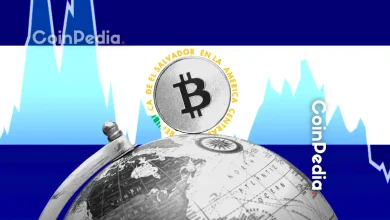
Analyst VirtualBacon highlights confusion in defining M2 Money Supply and global liquidity.
Bitcoin reacts strongly to M2 growth, influencing its bullish & bearish price movements
Meanwhile, altcoins are more sensitive to global liquidity shifts than Bitcoin.
The crypto market is always shifting based on global money trends, but a new debate is confusing traders. Meanwhile, popular analyst VirtualBacon recently pointed out a big issue, stating how different sources define M2 Money Supply and global liquidity, leading to mixed market signals.
Some traders see bullish signs in the chart, while others don’t, and the reason comes down to how M2 is measured. Is M2 growing, or are some trackers mixing it with global liquidity?
Bitcoin and M2 Money Supply
For Bitcoin, M2 Money Supply growth is a key factor in price movements. M2 measures the available cash reserves, including cash deposits, deposits in checks, savings, market accounts, funds, and deposits of less than $100,000.
When M2 expands, more money is available to invest, and Bitcoin benefits as a liquidity-sensitive asset. A rise in M2 often leads to a surge in Bitcoin prices, as more investors pour money into digital assets.
Global M2 liquidity is surging, and history suggests that risk assets like Bitcoin may soon react. As of April 1, global M2 money supply reached an all-time high of $108.4 trillion, marking a 3.7% increase from its 2025 low of $106 trillion recorded on nov 4. .
Altcoins React To Global Liquidity
Altcoins, on the other hand, are more influenced by global liquidity, which includes central bank balance sheets and overall risk investment trends. When global liquidity increases, investors become more willing to take risks, benefiting altcoins.
This is why altcoins often see more volatility compared to Bitcoin. The broader net cast by global liquidity impacts risk assets, and altcoins dance to this rhythm.
Things To Keep in Mind
The important lesson for crypto traders is to understand which data matters for their investments. Bitcoin’s price is closely tied to M2 Money Supply, while altcoins respond more to global liquidity trends.








